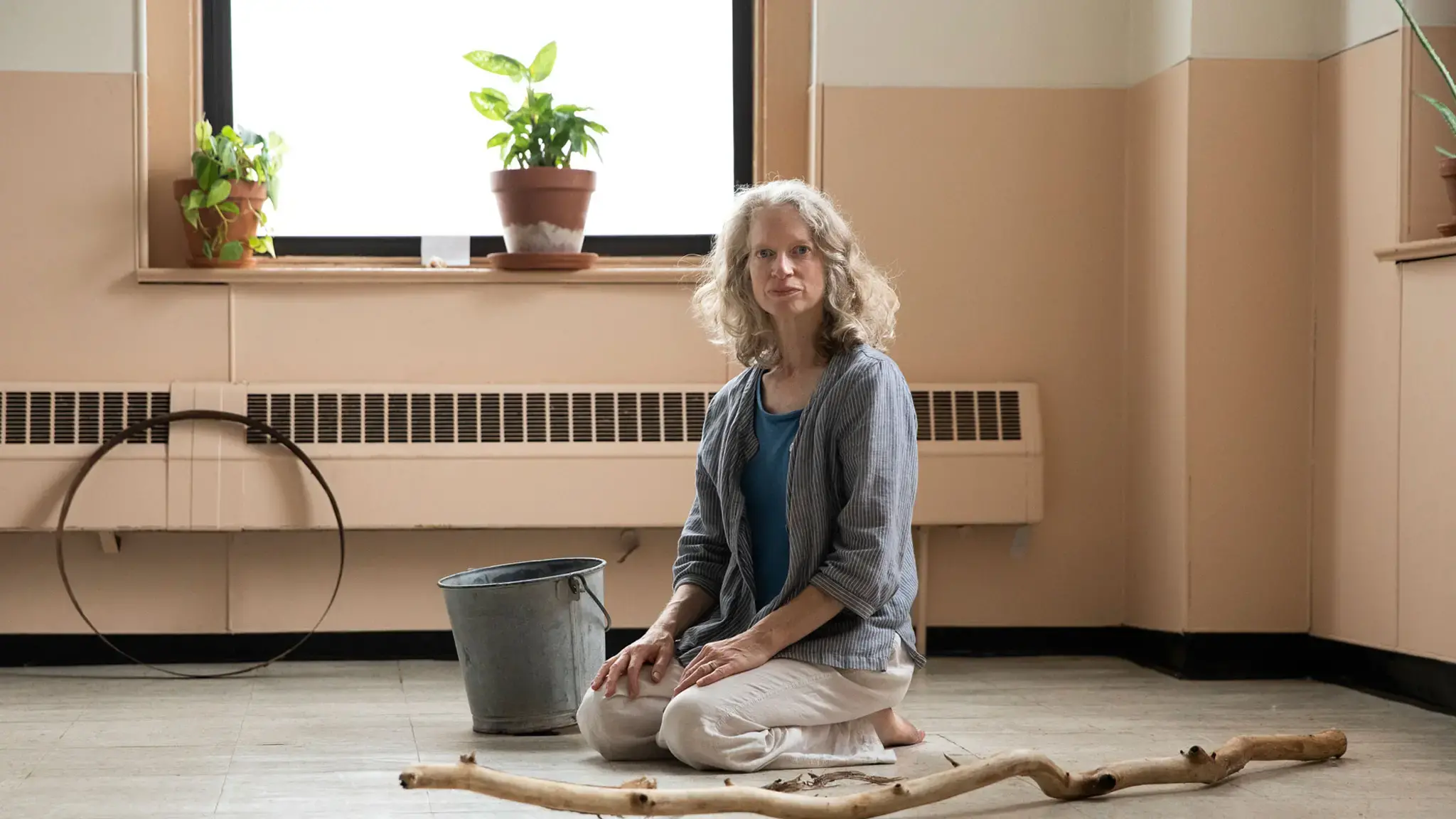Our “Pew Fellow of the Week” series focuses on the artistic lives of our Pew Fellows: their aspirations, influences, and creative challenges.
Choreographer Leah Stein (2018) spoke to us about the origins of her site-specific choreography, her present-day process, and the “inexhaustible” qualities of Philadelphia.
Stein’s choreographic practice intertwines improvisation and audience interaction in site-specific works that illuminate the connections among the body, sound, and location. In 2001, she founded Leah Stein Dance Company (LSDC), built on her commitment to making dances in unexpected sites—Bartram's Garden, Fairmount Water Works, and Eastern State Penitentiary, among others—and collaborating with artists across disciplines. Stein is currently working in residency at MacDowell Colony. In September 2019, she will debut new work inspired by artist Edith Neff at Philadelphia’s Woodmere Art Museum
How did you become an artist? Is there a particular experience that drove you to this choice?
I remember as a kid exploring with a passion the landscape—hills and fields and woods and abandoned buildings—where I grew up in the Hudson Valley in upstate New York. I developed an endless curiosity and excitement about the natural world. I would roam for hours, on my own, with a friend or my brother, and we felt as though we were the first to discover some untold location, artifact, or trail. I remember bushwhacking, creating our own path.
These experiences laid a foundation for creative exploration that shaped me in many ways, especially as an artist. A pivotal moment was when I was in my early twenties and created my first dance. I chose a location outside, by a concrete wall and an old tree, on uneven ground. I loved the space between the flatness of the wall, the curving trunk and branches of the tree, the shape of the space above the uneven ground. I noticed in the process that I felt, “Yes! I want to keep doing this. There is much to learn here!”
You’ve said that, in your choreographic practice, you “focus on an open state of attention and presence.” What do you want audiences to take away from experiencing your work?
I invite audiences to experience a state of attention where they become aware of movement, the body, space, architecture, interrelationships, and histories in ourselves and our surroundings. My work draws attention to the complexity of interconnections that exist but may have gone unnoticed. I want audiences to come away from my performances with a strong sense of place. I find it very rewarding to hear from audience members, years after a performance, who express the continued impact of a work, often saying that the performance site still evokes meaning, memory, and connection.
What is your daily art-making routine?
I maintain a body practice, inspired by Infinite Body Listening (my own practice), in addition to a series of deep listening practices. Infinite Body Listening practice is what I call my approach to my aging and changing body as a generative source, rather than a limiting one. In other words, I believe the body has infinite potential. While certain abilities change over time (I had hip replacement in January), listening to and engaging with the body as it is—as an infinite source of information, sensation, expression—there is a very creative, healing aliveness and expression that enriches my ideas, experiences, and creative process.
Writing and sometimes drawing are also part of my art-making process. When in rehearsal for a particular piece, the research and investigations intensify. But in between projects is an equally important time for learning, re-visiting, or completely letting go. I appreciate time when I feel like a fallow field, and then later realize how many connections and ideas were germinating at that much less outwardly active time.
What is your biggest motivator as an artist? What is your biggest fear?
Biggest motivator: Layers of history in my body and the environment and their interaction in the present moment. This time in history when listening is deeply needed.
Biggest fear: The loud voices will silence the quiet ones.
Why do you choose to work and live in Philadelphia? In your experience, what makes this arts scene distinctive?
The people, the history, the landscape are deep and connected. I have made dances inspired by these sources throughout the city. I have danced in empty, abandoned lots, on the banks of the Schuylkill, in burial grounds, at historic sites, in parking lots, art galleries, and in collaboration with the city’s incredible artists, with the diversity of urban and natural spaces. The range of sounds and acoustic spaces inspires me. For me, there is something inexhaustible in Philadelphia. And the pace is slower than New York, for example. I like that so much of Philadelphia is residential. Center City is relatively small. The diversity of people, cultures, landscape excites me, requires me to pay attention.
What is your most treasured possession?
Well, I’m not sure I have just one. But I really like this ‘card’ my partner gave me for my birthday. It is made of flattened old rusted metal, thin as paper—so thin there are openings in places. It’s folded in half, like a card, with one ‘page’ of thin metal inside. He found it on the old railroad tracks in South Philly, where we live, way down near Delaware Avenue in that strange no-man’s-land area not so far from the Delaware River, surrounded by big box stores. It stands up and says something different every day.
In reflecting back to the beginning of your career, what is the most useful advice you ever received?
Whether reviews are bad or good, or you feel dumb or smart, or have a lot or a little to say, just keep going. Trust the process. Keep making work.
What natural gift would you most like to possess?
To be able to sing, with a most natural, open, strong, and joyful voice!









